10 Pros & Cons of Acrylic Tubs (2025 Guide)
-
Greg Iacono
- Last updated:
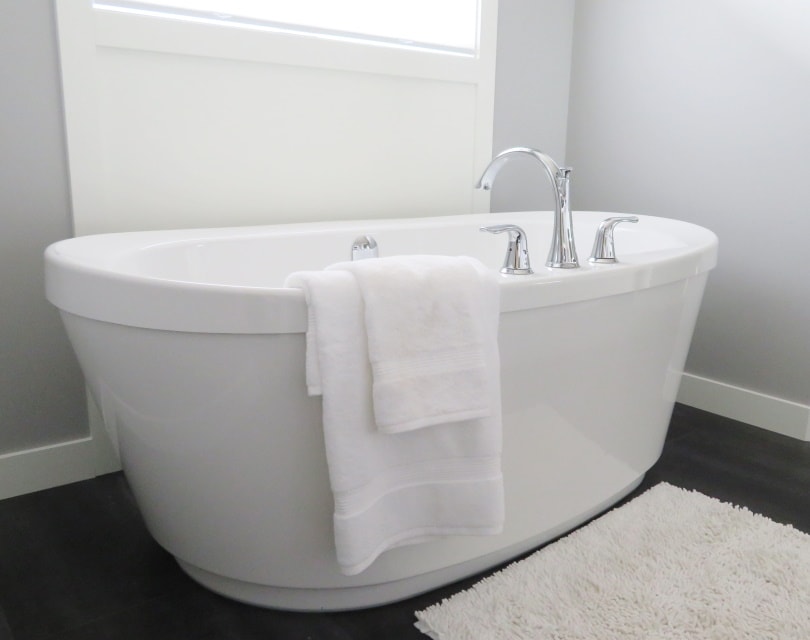
There are few things as universal about human life as the bathtub. Bathtubs have been around for centuries, and the oldest ever found was on Crete, the Greek island, around 1700 BC. John Michael Kohler invented the so-called “modern bathtub” in 1893, and the Kohler brand is still strong today. Mr. Kohler’s bathtub was, of all things, a cast iron horse trough that he had covered with an enamel finish. He then added four cast iron feet, and voila, an instant bathtub!
Except for improvements in the plumbing that connects bathtubs to a water system, they have hardly changed over the years. That is, until the invention of acrylics. Acrylic tubs were first seen in 1979 and were the brainchild of brothers James and Richard Wheeler. Acrylic tubs offer several advantages over cast-iron tubs but also have drawbacks. If you’re keen on discovering the differences between the two tubs (both good and bad), read on. Below are the 10 pros and cons of acrylic tubs, updated this year!
The 10 Pros & Cons of Acrylic Tubs

1. PRO: Acrylic Tubs have Good Heat Retention
Bathtubs today are made from several materials. There are porcelain-enameled steel tubs, porcelain-enameled cast iron tubs, fiberglass-reinforced polyester tubs, and, of course, acrylic tubs (which are thermoformed). Of these different materials, acrylic is the 2nd-best at retaining heat, which is essential if you’re talking about filling a bathtub with hot water to take a nice, relaxing bath.
Cast iron is the #1 for heat retention. More importantly, acrylic tubs offer better heat retention for the money, as they are much more affordable than cast iron tubs. Unlike a cast iron tub that will be cold to the touch, an acrylic tub will be the same temperature as the bathroom. There are no cold morning surprises when you sit on the edge!
2. PRO: Acrylic Tubs are Lightweight
Did you know that a cast iron bathtub can weigh upwards of 1,000 pounds? It’s true; even a smaller cast iron tub can weigh over 500 pounds! That’s why if you install a cast iron tub in a bathroom, you need to place extra support on the floor to ensure it doesn’t fall through!
The typical acrylic tub weighs about 100 pounds, far lighter than cast iron. That means they’re easier to install, cheaper to ship (which reduces their cost), and don’t need extra floor support.
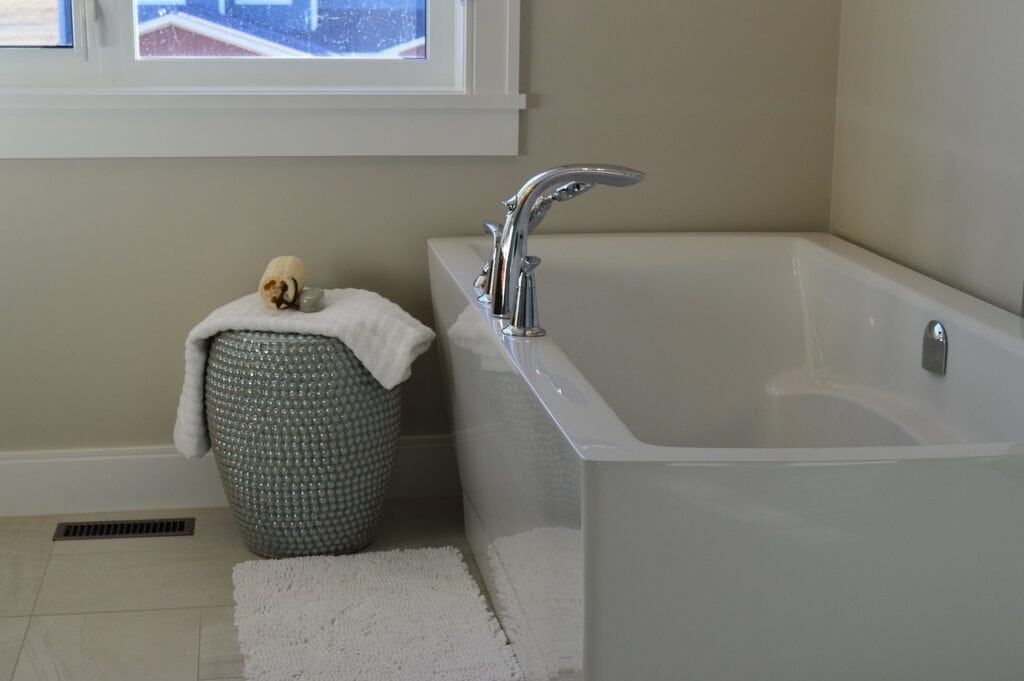
3. PRO: Acrylic Tubs are Durable
The high-end acrylic tbs being manufactured today are durable and, because most are reinforced with fiberglass, last a very long time. Acrylic itself is a durable polymer that can stand up to a lot of abuse.
Most manufacturers claim a 10 to 15-year lifespan for their acrylic tubs, but if you take care of one correctly, it should last much longer. You should note, however, that acrylic tubs need to be cleaned with the correct cleaning products so as not to scratch them.
4. PRO: You Can Endlessly Customize Acrylic Tubs
One of the challenges when renovating, remodeling, or building a home from scratch is choosing the best design for your bathtub. Most materials, however, don’t lend themselves to a high level of customization, except for acrylics. You can find acrylic tubs in various shapes and sizes because acrylic can be molded to any size or shape.
That’s not to say that you can have a custom-made acrylic tub designed for you because that would be exorbitantly expensive. But you can certainly go out and shop for acrylic tubs until you find one that fits your needs perfectly. Some acrylic bathtub companies will also give you options for adding soap dishes, corner caddies, and other extras.
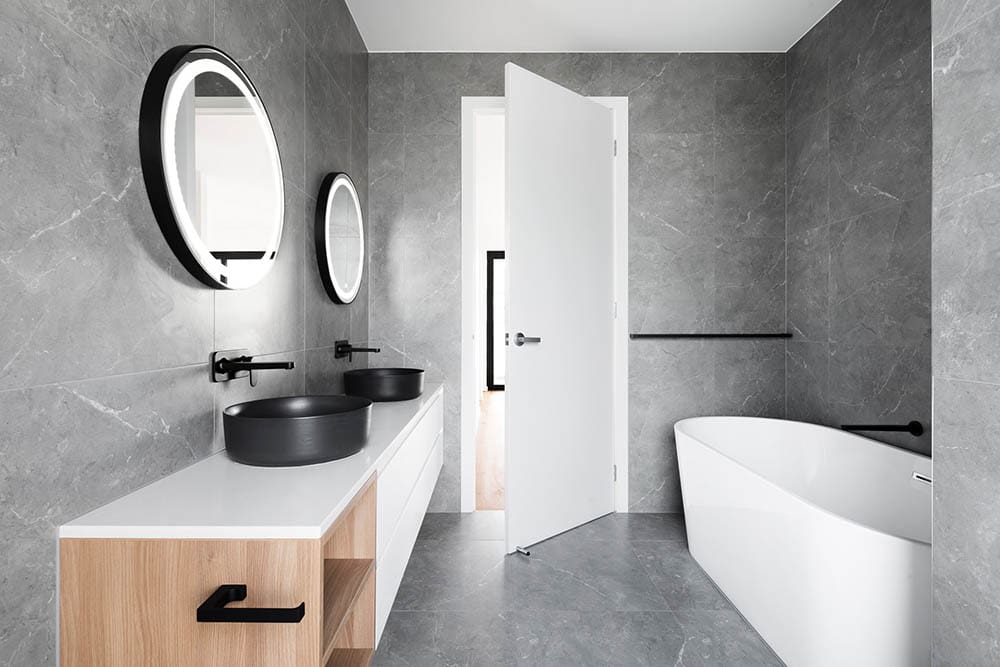
5. PRO: Acrylic Tubs Come in Different Colors
One of the mainstays of bathtubs over the decades has been that they’re white, or at the most, an off-white color. That, for many folks, is a bit boring and restrictive when designing a new bathroom. The nice thing about acrylic tubs is that acrylic can be made in a rainbow of colors.
We’re talking baby blue, coffee, caramel, grey, black, and even orange! That’s a lot of color choices, and it opens up another level of design and customization for anyone remodeling or building a new bathroom. However, most acrylic tubs are still white on the inside of the tub.
6. PRO: Scratches in Acrylic Tubs are Easy to Repair
As you’ll see below (#9), acrylic tubs are easy to scratch and get scratched all the time accidentally. However, since acrylic tubs are the same color throughout, polishing and repairing scratches is a fast and easy process similar to polishing scratches on a car. It’s even easier because cars are painted, while acrylic, as we said, is the exact same color from one side through to the other side.
While you certainly want to do everything you can to avoid scratching your beautiful acrylic tub, it’s nice to know you can also remove those scratches without much fuss.

7. PRO: The Color of Acrylic Tubs Doesn’t Fade
If you’ve ever owned a fiberglass or enamel-coated bathtub, you know that once its color starts to fade, there’s no going back to the original color. That won’t happen with an acrylic tub, as its color (whichever you happen to choose for your bathroom) doesn’t fade or change over time.
This point goes back to the fact that acrylic tubs are the same color through and through, while fiberglass is not. Even porcelain and enamel will fade with time, but an acrylic tub won’t.
8. PRO: Some Acrylic Tubs are Impervious to Mold and Mildew
Some acrylic tub manufacturers are now infusing their acrylic tubs with anti-microbial chemicals. These chemicals, while they don’t have any effect on you, will have a definite impact on mold and mildew.
The manufacturers even claim that the anti-microbial injection makes an acrylic tub impervious to mold and mildew. Whether that’s true or not remains to be seen. However, if given a choice between cleaning the inevitable mold and mildew off your tub or never seeing it at all, we think you’ll agree that the latter is the way to go.

9. CON: Acrylic Tubs Scratch More Easily
Imagine you’ve just installed a beautiful new acrylic tub in your bathroom. Now imagine that, after a week, you decide to clean it and accidentally scratch it badly because you used the wrong cleaning products.
That, unfortunately, has happened to countless people who didn’t realize that some cleansers are far too abrasive to be used on acrylic. Comet, for example, one of the most popular bathroom and kitchen cleaners in the United States, should never be used on acrylic. Also, if you drop something heavy into an acrylic tub, it can cause a deep scratch.
10. CON: Acrylic Tubs Stain More Easily
One of the biggest cons of an acrylic tub, especially for people who use a lot of dye in their hair or clothing, is that those dyes easily stain acrylic tubs. Even worse, the stains are almost impossible to remove once it happens. Other products stain acrylic, and the normal stains from bathing can cause discoloration also.
This is actually a double problem because you can’t use a strong, abrasive cleanser to clean an acrylic tub. In other words, if you have an acrylic tub, color your hair or dye your clothes over a sink instead.
How To Take Care of an Acrylic Tub
Taking care of an acrylic tub isn’t complex, but it requires planning and forethought to do it right and ensure your tub stays in beautiful condition. Below are a few best practices to follow when taking care of your acrylic tub.
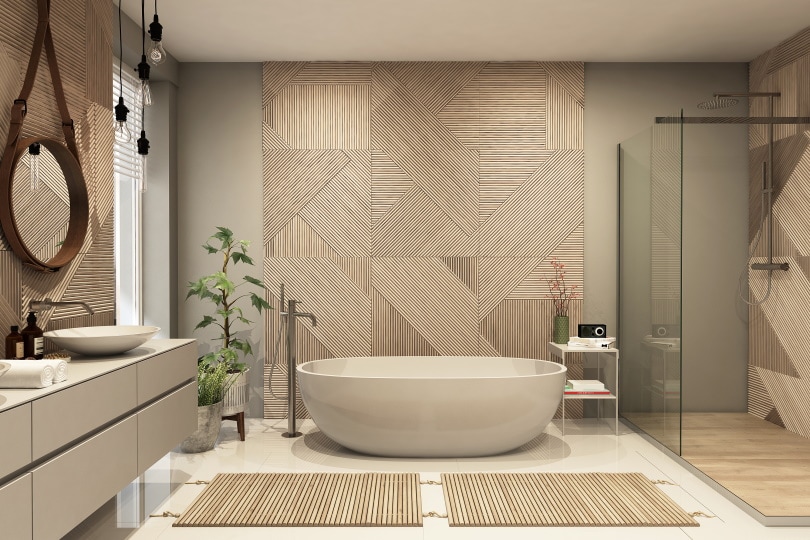
Never Use Abrasive Cleansers
There’s no denying that abrasive cleansers are fantastic when you must get out stubborn stains. However, the problem with acrylic tubs is that they scratch easily. That’s why you should never go near them with any type of abrasive cleaning product. That includes powdered cleaners like Comet and Ajax, wet abrasives, abrasive sponges, or scrubbers. You should also avoid chemical solvents and chlorine, which can damage the acrylic surface.
Use a Cleaner Made for Acrylic Tubs
Several cleaning brands today manufacture acrylic bathtub cleaning products that are safe for your acrylic tub. Many don’t require any scrubbing, which will considerably reduce your cleaning time (and use of elbow grease). When you use this product, for example, all you need to do is spray it on your acrylic tub and forget about it. The next day when you take a bath or a shower, the water you use will automatically rinse away the cleaner and the soap scum.
Use Plain, White Vinegar
If your acrylic tub is badly stained or dirty, one easy way to clean it without damaging it is to fill it with hot water and then put 2 or 3 cups of plain, white vinegar in the water. Let the water and vinegar mix sit in the tub for about 30 minutes. While you do, the acid in the vinegar will loosen any of the dirt, grime, and scum on the tub. After 30 minutes, drain the tub completely. Before the tub dries, use a non-abrasive cleaner and sponge to remove the stains.
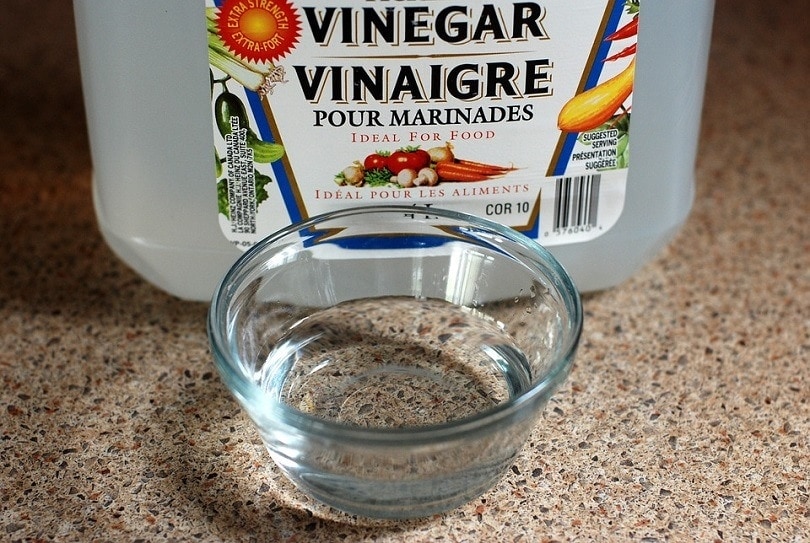
Use Baking Soda
Contrary to popular belief, baking soda is not abrasive and will not scratch your acrylic tub. To use baking soda, first, use the sprayer in your acrylic tub to wet the tub thoroughly. Then, sprinkle the tub liberally with baking soda and let it stay in place for about 10 minutes. After 10 minutes, use a non-abrasive sponge or another cleaning device to remove the mold, soap scum, and mildew. If you find some stains and soap scum are still difficult to remove, you can switch from baking soda to borax.
Clean Corners and Edges with a Used Toothbrush
An old toothbrush is perfect for cleaning corners, edges, and places where the tub fixtures meet the tub. Not only does a toothbrush give you some leverage, but you can also reach into small areas and crevices more easily. You can use a larger scrub brush with soft bristles if you have a bigger tub cleaning job.
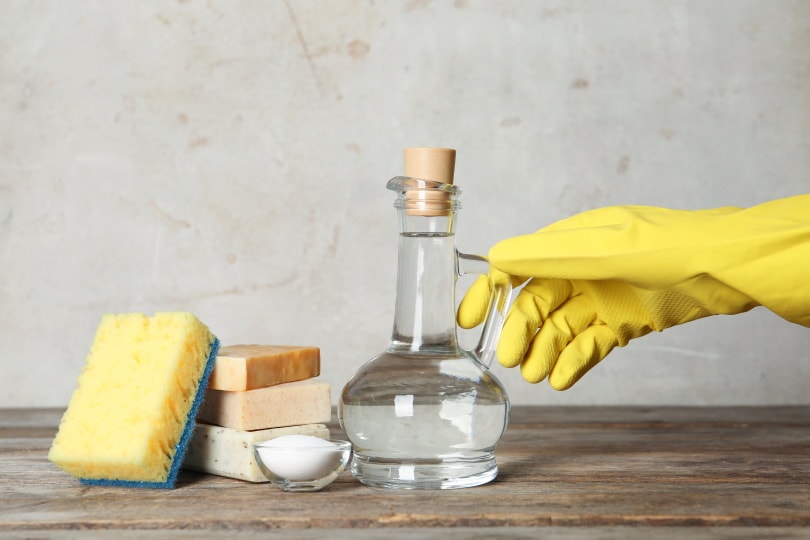
Use a Lemon Cut in Half
Like white vinegar, lemon is acidic and will loosen soap scum and other stains on your acrylic tub. The way to do it is simple; cut a large lemon in half and, gripping it firmly in your hand, rub the lemon vigorously over the stains until they start to fade and eventually go away entirely. It might take a few minutes, so be patient.
If the water coming into your house is hard, lemon is a great cleaning choice, as it can efficiently remove hard water stains and deposits from an acrylic tub.
 Final Thoughts
Final Thoughts
Acrylic tubs have their benefits but also have their drawbacks. They are lightweight, cost much less than cast-iron tubs, and come in a wide variety of sizes, shapes, and colors. They’re durable, attractive, and should last many years under the right conditions.
However, acrylic tubs are also quite easy to scratch and stain and thus should never be cleaned with abrasive cleaners. Depending on how often you use your acrylic tub, not being able to use a heavy-duty abrasive cleaner might make your cleaning chores a bit more difficult.
We hope that our guide to the pros and cons of acrylic tubs has answered all of your questions thoroughly. If you’re renovating or remodeling a bathroom, we hope the information we’ve provided today will help you to make the right choice for your new tub.
- https://www.ihslouisville.com/blog/the-dos-and-donts-of-caring-for-an-acrylic-bathtub/
- https://cleaningbusinesstoday.com/blog/4-types-of-abrasive-cleaners/
- https://www.wikihow.com/Clean-an-Acrylic-Tub
- https://longhomeproducts.com/blog/pros-cons-acrylic-bathtubs/
- https://www.inman.com/2018/07/06/building-a-better-bathtub-the-pros-and-cons-of-9-bathtub-materials/
- https://www.qualitybath.com/discover/post/18462/acrylic-tubs-everything-you-need-to-know
- https://www.toledonewbath.com/bathroom-remodel-blog/acrylic-vs-fiberglass-bathtubs-which-is-best-for-you
- https://www.houzz.com/discussions/6012558/where-can-i-order-a-custom-made-to-order-acrylic-bathtub
- https://homeguides.sfgate.com/grow-herb-garden-indoor-outdoor-13771633.html
- https://www.homequestionsanswered.com/what-are-the-pros-and-cons-of-using-an-acrylic-bathtub.htm
Featured Image Credit: Piqsels
Contents
